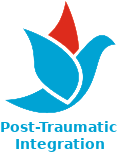Core Beliefs
The loss of a sense of one‘s identity is particulary strong in trauma. It may that person view herself as totaly worthless. If trauma was severe and started very early in the childhood one can develop even quite serious identiy disorder. Challenge core beliefs can serve as exploration of own incorporated beliefs, have an innerview to accept or deny them. In that way we are supporting the power of our conscious mind.
LessThe loss of a sense of one‘s identity is particulary strong in trauma. It may that person view herself as totaly worthless. If trauma was severe and started very early in the childhood one can develop even quite serious identiy disorder. Challenge core beliefs can serve as exploration of own incorporated beliefs, have an innerview to accept or deny them. In that way we are supporting the power of our conscious mind.
The loss of a sense of one‘s identity is particulary strong in trauma. It may that person view herself as totaly worthless. If trauma was severe and started very early in the childhood one can develop even quite serious identiy disorder. Challenge core beliefs can serve as exploration of own incorporated beliefs, have an innerview to accept or deny them. In that way we are supporting the power of our conscious mind.
- Module
- Intervention
- Submodules
- PTSD and the Brain
- Group size
- Individual
- Small group
- Duration
- 1 hour minimum
Keywords
values, beliefs, internalized images, sense of yourself, subconscious mind
Aims
When we are able to recognize, confirm and be able even chellenging our belief system, we start to support the power of our conscious mind. Related trauma and brain connection by challenging our core beliefs and thoughts plays an important mindset indicator.
Participants
The activitiy can be carried out individually or in a small group of 7 to 12 participants.
Description
Any negative belief you have can be changed or/and modified if you choose so. Since this process is not easy, it requires a great deal of persistent effort. If you want to challenge your core beliefs, you have several options:
- You may look for evidence that your belief is valid.
- You may debate your beliefs with others.
- You may try visualization or imagery to change certain aspects of the belief.
To challenge your belief you may also ask yourself certain questions (partially adopted from Resick 1994):
- What is the evidence for and against belief?
- Is the belief the fact or a habit?
- Is my interpretation of certain situation accurate?
- Am I thinking in black-and-white or all-or-nothing ways?
- Are the words I am using extreme or exaggerated (e.g. must, should, ought, always, forever,…)
- Am I making excuses?
- Is the source of information for my belief reliable?
- Are my judgements based on feelings, not facts? Do I consider a feeling to be a fact?
- Is the belief my own, or belong to someone else?
- Does it fit in with my priorities, values and judgements?
- Does it make me feel bad?
- Is it hurtful to me?
- Is it hurtful to others?
- Is it considerate to me?
Ask the participants to write down five beliefs, come our of their life experiences. Let them rate them further on in a rang and maybe change the order. The trainer/teacher/facilitator encourage them to make pair and present the beliefs with the other by taking some steps (wuestions) from above. Give them some 15 minutes for exchange. Then invite them back in the circle, open the discussion, especially about negative and destructive or self-sabotaging beliefs and ask participants for the feedback.
Material
paper and pen, poster, color pens
Method
self-exploration, internalization, experiential learning, discussion, feedback
Advice for Facilitators
It is expected that the trainer is skilled in a basics of group dymics and be sensitive enough to work with such users/clients and sensitive themes.
Source (APA)
Adapted from: Williams, M.B.; Poijula, S. (2016). The PTSD Workbook, Third Edition. Oakland, CA: New Harbinger Publications, Inc.
Contributor
WIN (Wolfgang Eisenreich).
Announcements
- - There are no announcements -

